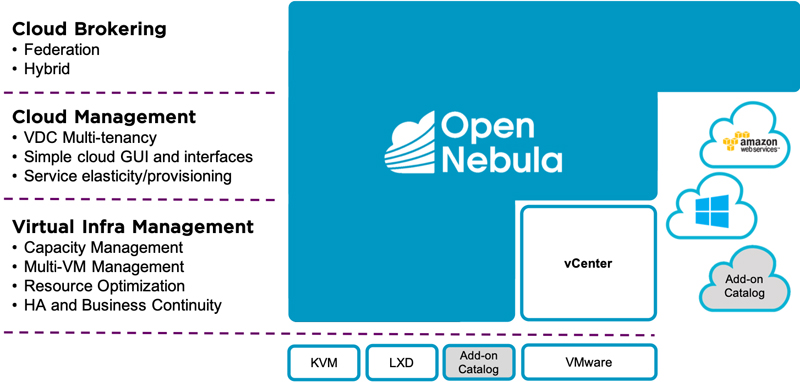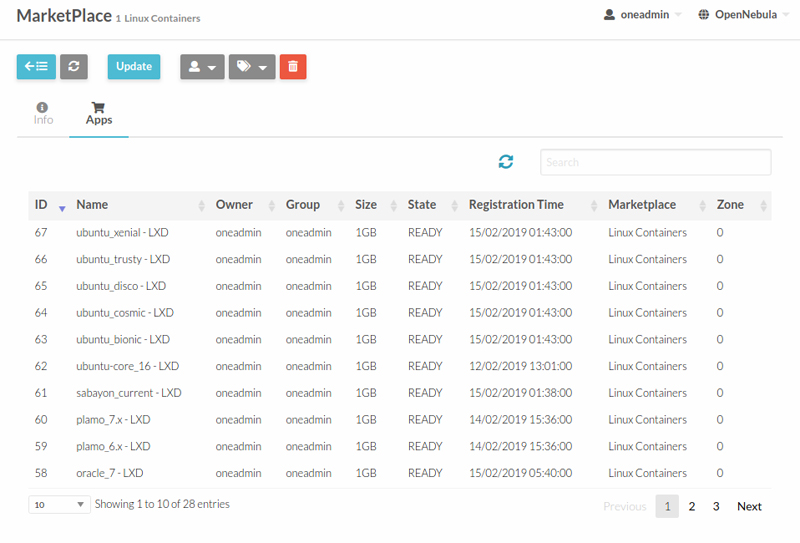


For anyone looking for an open-source, enterprise solution to orchestrate data-center virtualization and cloud management with ease and flexibility, OpenNebula is a fine candidate that includes:
And, it's lightweight, easy to install, infrastructure-agnostic and thoroughly extensible.

Figure 1. High-Level Features
Check here for a more detailed look at OpenNebula features.
With the current conversation shifting away from centralized cloud infrastructure and refocusing toward bringing the computing power closer to the users in a concerted effort to reduce latency, OpenNebula's 5.8 "Edge" release is a direct response to the evolving computing and infrastructure needs, and it offers fresh capabilities to extend one's cloud functionality to the edge. Gaming companies, among others, who have been using OpenNebula were of the first to push for these features (yet they don't have the be the only ones to benefit from them).
LXD Container Support
In addition to supporting KVM hypervisors, as well as offering a cloud management platform for VMware vCenter server components, OpenNebula now provides native support for LXD containers as well. The virtues offered by LXD container support allow users and organizations to benefit from:
From a compatibility perspective, OpenNebula 5.8 and LXD provide the following:

Figure 2. Configured LXD marketplace in the OpenNebula Front End
Disaggregated Data Center (DDC) provisioning
With the evolution of a more diverse network of infrastructure to handle our growing needs for compute power, and global bare-metal public cloud providers offering physical resources along the "edge of the network", OpenNebula 5.8 offers the native provisioning capability of bare-metal resources (like Packet and AWS) to swiftly enhance one's private cloud infrastructure and have the flexibility to take advantage of these public resources along the edge. So for a gaming company who needs to augment its cloud resources in edge locations quickly, or any other organization with the need to accelerate its migration to the cloud, OpenNebula 5.8 provides—within a single command—the ability to provision, deploy and configure bare-metal resources as integral clusters within one's private cloud.

Figure 3. OpenNebula Edge Cloud
Regarding edge computing, you can learn more about OpenNebula's partnership with Packet or how Telefónica is using OpenNebula in its edge solution.
—Michael Abdou